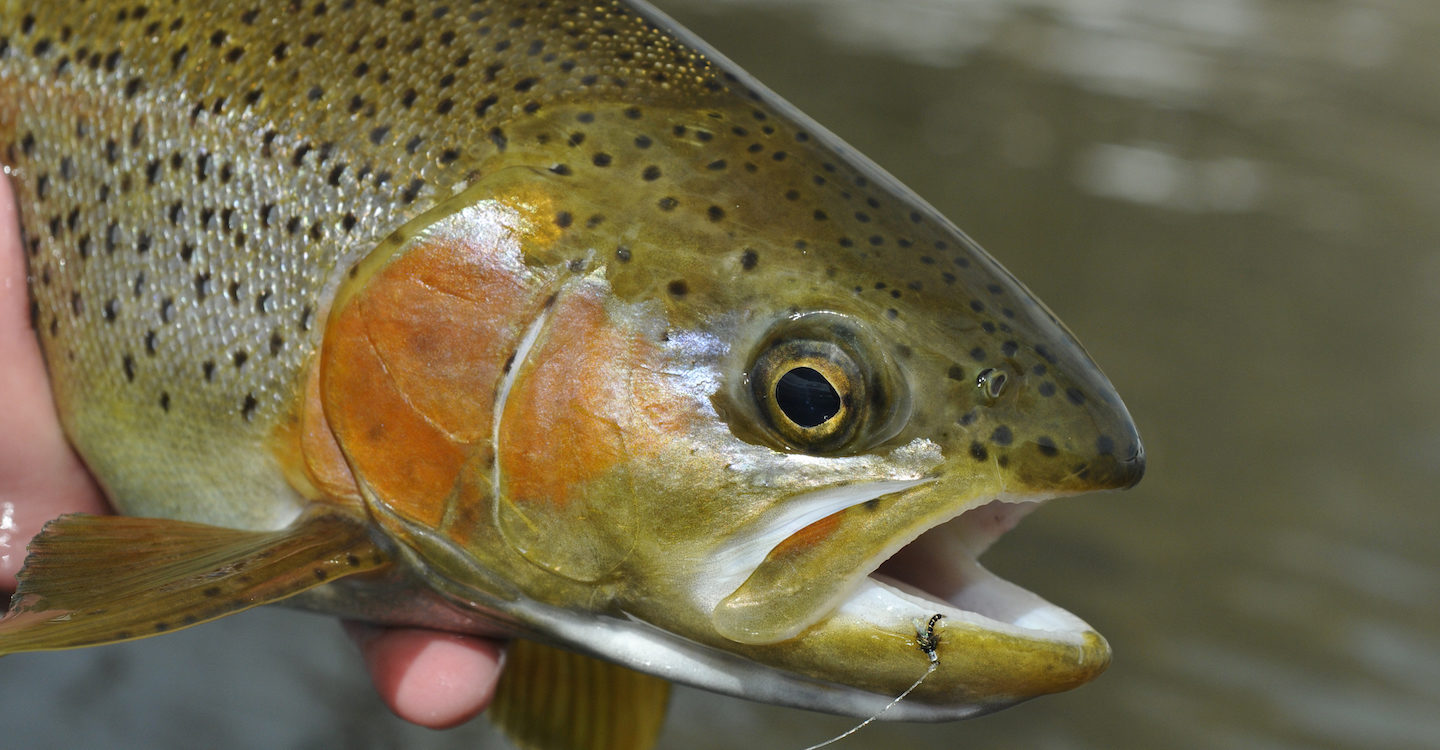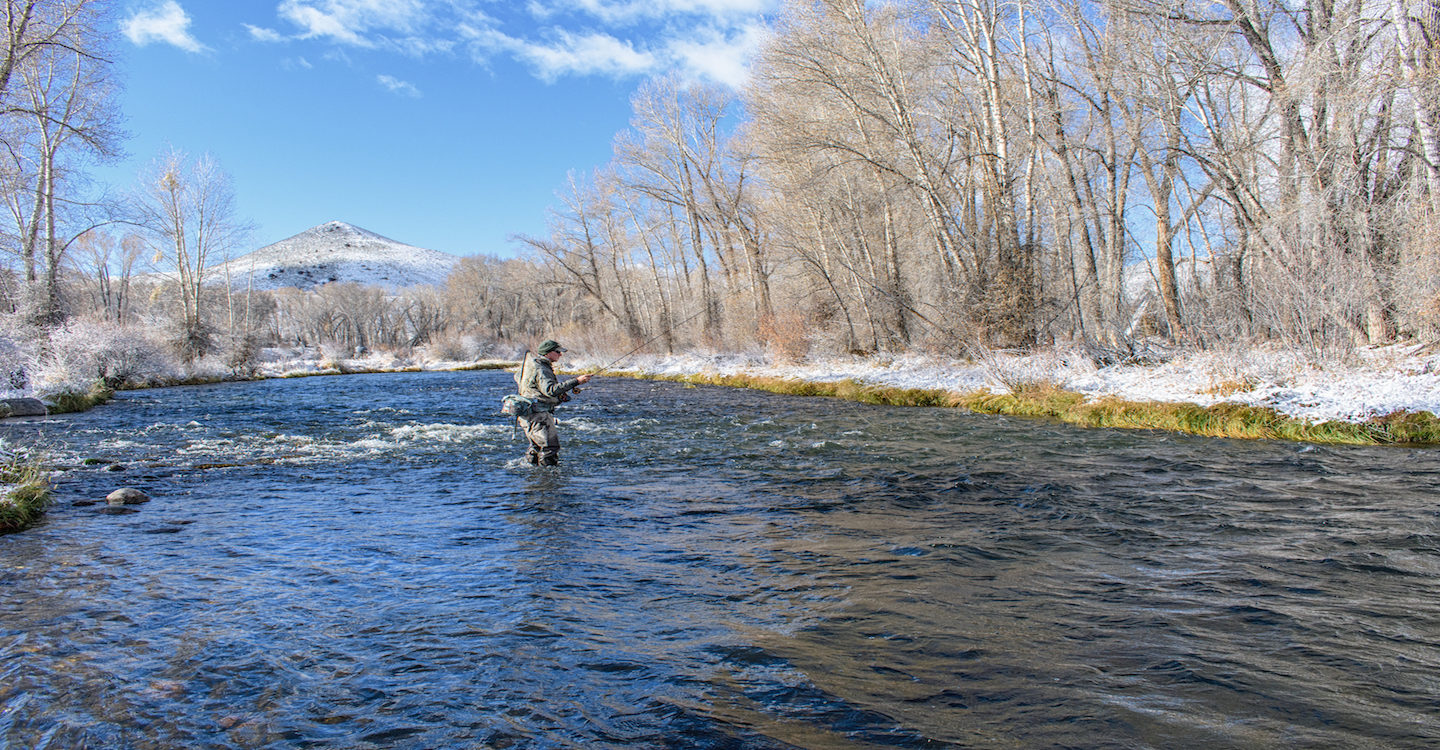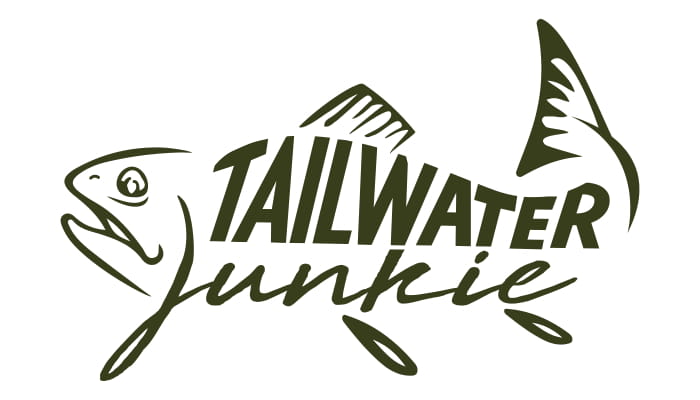The Manhattan Midge, a Colorado Favorite
The Manhattan Midge is a pattern I developed to fool finicky Rocky Mountain trout, especially those found in tailwater fisheries. As you might imagine, there’s an interesting story behind the Manhattan Midge. The Manhattan Midge, as the name implies, was developed in a small New York City apartment where my close friend, Jay Park was living at the time.
Jay and I met in New York City during the winter of 2014 when I was working at the Orvis Store. We immediately became friends because we shared a similar passion for fly fishing and tying flies. When you live in the concrete jungle, you have to live your fly fishing dreams vicariously through DVD’s, magazines, YouTube Videos, and tying flies. Tying flies was more than a hobby for Jay and I—it was an addiction!
Tying flies kept us connected to the sport. Once a week, Jay and I would rendezvous at his apartment to tie flies. Each week we tied different flies but usually focused on tying Colorado staples. We tied a lot of bugs that winter; I mean a lot! We both tied up two boxes of “bugs”, which was an addition to a huge inventory of flies we had already amassed in recent years.
For quite some time, I wanted to develop a midge pattern for western tailwaters. My goals and objectives were simple—create a midge imitation that was easy to tie, durable, and most importantly consistently fools selective Rocky Mountain trout. After having success with some of my father’s flies; I knew I wanted to incorporate three materials into the design—Glamour Madeira, peacock herl, and a small silver-lined glass (mercury) bead.

This Yampa river rainbow was fooled with a size 20 Manhattan Midge. It has quickly become a guide favorite on both eastern and western tailwaters.
The Manhattan Midge is a souped-up hybrid of some of the Dorsey family favorites—the Top Secret Midge, Mercury Black Beauty, and Mercury Blood Midge. The Manhattan Midge incorporates the best attributes of each of the previously mentioned patterns. It has a slim profile, a fine-segmented body, a flashy wing, peacock collar, and a clear, silver-lined bead to imitate trapped air bubbles in the thorax prior to emergence.
Over the past three years, the Manhattan Midge has become a local favorite on the South Platte River (Cheesman, Deckers, Eleven Mile Canyon and the Charlie Meyers State Wildlife Area) and its effectiveness has spread to eastern tailwaters as well! Several guides in Colorado consider it to be one of their top guide flies. “I have been a fly-fishing guide on the Gunnison River for over 25 years. The Manhattan Midge is one of our top producing patterns when midges are emerging. It is the perfect attractor…I run the Manhattan Midge as my lead fly and a Flashback Mercury Black Beauty as a trailer. I am sure some mornings that combo hooks every feeding fish in the run” says Jason Booth, co-owner of Gunnison River Guides.
Tying and Fishing the Manhattan Midge
I fish with the original Manhattan Midge (black) a large percentage of the time. I also carry it in a handful of other colors including; brown, olive, red and purple as well as a flashback variation. The flashback version incorporates a piece of Mylar tinsel as a back strap across the abdomen, overlaid by a copper rib. Each variation has its time and place, so don’t be afraid to think outside the box from time to time and mix things up.

The Manhattan Midge is effective year-round. It can be fished as either an attractor or a dropper in a tandem nymphing rig.
Midge feeders eat the Manhattan Midge year-round with confidence. The size and color of the pattern varies slightly depending on the time of year. For instance, during the dead of winter, I typically use a size 22, but during the spring months, especially in March when the big spring midge hatches, I often use a size 18. During the summer months, I find myself fishing with a size 20 most of the time. Visual observation of the adults flying above the water helps you decipher which size to use.
The Mahattan Midge can be fished as an attractor or dropped off an egg pattern, San Juan Worm, or red midge larva. In riffled water, I recommend using the Manhattan Midge as a dropper, but in slow pools and tailouts, where trout often scrutinize your flies, I like using the Manhattan Midge as an attractor and trailing (one or two) midge pupa or mayfly emergers behind it.
Manhattan Midge Recipe
Hook: #18-22 Tiemco 2487
Bead: Clear, silver-lined glass bead (extra small)
Thread: Black UTC 70 Denier
Abdomen: Black UTC 70 Denier
Rib: Copper UTC Ultra Wire, (small for #18-20) & (extra small for #22)
Wing: Glamour Madera (#2400)
Thorax: Peacock Herl (eyes)

Hello Forrest,
Was lucky enough to fish Boxwood Gultch with your dad Sep.1st, I asked him about your Manhattan Midge, he told me how you developed it in Manhattan, you know the rest of the story. After lunch that day he took me to a spot and tied on a black Manhattan, the fist two casts were fish-on, missed one on the third but landed another on the fourth cast. That doesn’t happen to often, maybe never unless your using pellets, great pattern, thank you.
Mark
Hi Mark,
Sounds like you had a great day on the water! Thanks for sharing, it is always fun hearing stories of success with the Manhattan Midge.
Tight lines,
Forrest
Hello Forrest, my name is Marco Bernardes, I’m Brazilian and I love fly fishing. I was very pleased and surprised when I found your instagram, many beautiful fish and very beautiful and tying flies. Obviously I’m already a follower and admirer of your work and your I was wondering if you were the salesman who came to me sometimes at the Orvis store in Manhattan, I always wanted to know if the salesman are also fisherman, but after reading that story about the Manhattan Midge, I was really sure it was you who answered, I now want to test the Manhattan Midge near Manhattan on the East Brunch Crotton River, and also test other flies from its TailWater Junkie website.
Congratulations on the beautiful fishing and flie tyng.
-Tight lines –
Marco Bernardes
Just saw this. Thanks for the article. Could you tell me exactly how you fish the midge? In other words, what is your leader setup? And, do you use a strike indicator (and, if you do, do you have a preference?). If not, how do you detect strikes.
Hi Alex,
In terms of midge fishing I prefer to start with a 5x leader. Small flies and light tippets will be your key to success during the winter. Traditionally, I will fish tippets down to 6x with the smaller flies.
For a strike indicator I prefer yarn due to its sensitivity and the ability to adjust the depth of the flies.
Forrest